Casino House Rules Blackjack
It’s easy enough to find how to play blackjack articles on the internet, but a lot of them ignore the subtler aspects of the blackjack card game’s rules.
This is the casino’s sole advantage in blackjack, and if everything else were equal, and the player “mimicked” the dealer’s playing rules, the house edge in blackjack would be about 8%. (The dealer and player each would have about a 28.3% probability of busting, if they played in the same manner; therefore, 0.283 times 0.283, or about 8. Blackjack House Edge Introduction. Enter any set of blackjack rules from the options below. The house edge under proper basic strategy for these rules is indicated in the box below.
This post is my attempt to correct that and focus more on the rules of play than the basic stuff.
MGM National Harbor boosted the casino's advantage at some blackjack tables under a new regulatory regime that gives Maryland casinos more flexibility to determine their own rules governing such. Grand Z Casino and Hotel, Central City: 'What are the house rules for blackjack? Check out answers, plus 2,165 reviews and 54 candid photos Ranked #1 of 3 hotels in Central City and rated 4 of 5 at Tripadvisor.
At the same time, this post should be more useful for the blackjack beginner because it covers rules that other pages don’t cover.
A Broad Overview of Blackjack Card Game Rules
Casino House Rules Blackjack Free
You play real money blackjack with the same standard 52-card deck that’s used for poker or other casino card games like baccarat. The joker is never used, and there are no wild cards in blackjack. Most casinos use multiple decks of cards, usually 2, 6, or 8 decks.
The dealer uses a blank card to signify when it’s time to reshuffle the decks, and if the casino is using more than 4 decks, the cards are dealt from a box called a “shoe.” In single deck or 2-deck games, the cards are dealt by hand.
The object of the game is to get a score as close as you can to 21 without going over. You have one opponent – the dealer. How the play of the other gamblers goes has nothing to do with your own outcomes.
The cards have point values based on their rankings. In other words, the 2 of spades is worth 2 points, the 3 of hearts is worth 3 points, and so on. The suit doesn’t affect the point scores for the cards.
Face cards – the jack, queen, and king – are each worth 10 points.
And an ace counts as 1 or as 11, depending on which is better for the player.
Blackjack Betting Rules (Cash and Chips) – How to Bet on the Card Game
Before you can play, you must buy into the game. This usually means exchanging cash for chips at the blackjack table, but in many casinos, you can play cash, too. Usually you only play cash once when you first sit down at the table, though – as soon as that first hand is dealt, the dealer will want to convert your cash to chips.
It’s important that you don’t hand your cash directly to the dealer. Lay it on the table. The dealer doesn’t want to be accused of stealing your money, which is why they have such specific procedures in terms of counting your money on the table in such a way that it can be filmed by the camera above – the “eye in the sky.”
You’ll find a placard at the blackjack table which lists the betting limits. You’ll rarely find a casino offering a minimum bet of less than $5 per hand, and $500 per hand is often the maximum bet. High roller rooms often have higher betting maximums, but it’s important to know the minimum before sitting down.
You don’t want to buy in for $300 at a $100 minimum blackjack table and wind up with only 3 chips to play with.
The Rules for Dealing Blackjack – How to Deal the Card Game
The cards get shuffled periodically at most casinos, usually when the deck has been dealt down to the cut card. In some casinos, though, a continuous shuffling machine is used. In this case, you can forget all about counting cards.
The Dealer Has Specific Rules for How to DealShe waits until everyone has placed their bets and the decks have been shuffled. Then she gives each player a card, one at a time, clockwise around the table. She also gives herself a card, face-up.
The players’ cards are dealt face-up in a game dealt from a shoe, but if the game is being dealt from the dealer’s hand, the cards are dealt face-down.
After everyone gets their first card, the dealer gives each player a 2nd card. The players either get both cards face-up or face-down, depending on the nature of the game. But the dealer’s 2nd card is always face-down.
That’s how the initial deal goes.
After that, it’s time to make game-play decisions.
Blackjack Rules for Naturals
The first thing that happens after the deal in this card game is the adjudication of “naturals”, AKA “blackjacks.”
A blackjack, or natural, is a 2-card hand worth 21 points. To get a blackjack, you must have an ace, but you must also have a 10-point card. It doesn’t matter if it’s a face card or a 10, it still counts as a blackjack if it’s 2 cards that make up a total of 21.
If a player gets a natural and the dealer doesn’t, the player immediately gets paid off at 3 to 2 odds. In other words, if you bet $5 on the hand, you win $7.50 immediately. That’s it for the hand.
Note:Some versions of blackjack only pay off at 6 to 5 odds. You should avoid such games, as they give the house a much higher mathematical edge than the standard version of the card game.
If a dealer gets a natural and the player doesn’t, the player immediately loses. But you only lose the bet. You don’t pay a penalty or anything like that.
If both the player and the dealer get a natural, the result is a push. The player gets to keep his bet, but he doesn’t get any winnings. A push is basically the same thing as a tie.
A natural only happens about once out of every 20 of your hands, so it’s common enough that you’ll see it often.
But most of the time, you’ll still have to play your hand.
Blackjack Gameplay Rules – How to Play the Card Game
So far there hasn’t been much gameplay to discuss – just betting, shuffling, dealing, and checking for naturals.
Once all that’s done, the gameplay begins, and that’s where the rules for this card game get interesting.
The player to the dealer’s left acts first, and play proceeds around the table. The dealer acts last.
The 2 basic moves in the game are to stand or to hit. To stand means to decline any additional cards and take the total you have to the showdown. To hit means to accept another card from the dealer to increase your total score.
You have no limit to the number of additional cards you can take, but you can also decide to stand at any time.
But, if at any time, you hit and get an additional card that makes your total 22 or higher, you immediately lose and the dealer collects your bet.
This is, in fact, where the house gets its edge. Even if the dealer also busts, you’re already out of the game if you’ve busted. What should be a tie in a “fair” game is a loss for the player.
But, if you play with basic blackjack strategy, the house edge for blackjack is one of the lowest in the casino. It’s less than 1% depending on the conditions of the game.
Also, this is a good time to point out the importance of an ace. Since it can count as 1 or 11, you have more flexibility in how aggressively you play your hand. That’s why your total number of points when you have an ace in your hand is called a “soft” total. It’s impossible to bust a soft total because you can always decide to count the ace as 1 instead of 11.
The Card Game Rules for Other Player Options
Hitting and standing aren’t your only options. You can also do the following with your hand:
- Double Down – This means to double the size of your bet and take one – and only one – additional card.
- Take Insurance – This option is only available when the dealer has an ace. Insurance is a side bet that the dealer has a 10 for her face-down card, giving her a blackjack. The size of the insurance bet is half that of your initial bet, and it pays off at 2 to 1. Of course, if you win the insurance bet, you lose your main bet, breaking even for the hand. That’s why it’s called “insurance.” You’re insuring your hand against the possibility that the dealer has a blackjack.
- Split – When you have 2 cards of the same rank, like aces or 8s, for example, you can put up an extra bet and play 2 hands. The starting card for each of the 2 hands comes from your hand, and you get a new card on top of each of them. You play each hand independently from that point forward.
Rules for How the Dealer Plays Her Hand
Once all the players have busted (gotten a total of 22+) or stood, the dealer plays her hand. The dealer doesn’t get to exercise judgment when playing her hand; she must play according to the house rules for the dealer.
This means the dealer must hit any total of 16 or lower. It also means the dealer must stand on a total of 17.
There’s one wrinkle, though – a soft total of 17 might force the dealer to stand, or it might force the dealer to hit. If the dealer must stand on a soft 17, that’s an advantage for the player. If the dealer hits a soft 17, the casino has a higher edge than in the other version of the game.
Once the dealer stands, the bets are paid off. If the dealer has a higher total than the player, the dealer wins the player’s bet. If the player has a higher total than the dealer, the dealer pays the bet off at even money.
If the dealer and the player stand on the same total, the bet is considered a push. The player gets his bet back, but he gets no winnings on top of it.
Conclusion
That’s my best, most complete, and simplest explanation for blackjack card game rules.
If I left anything out, let me know in the comments.
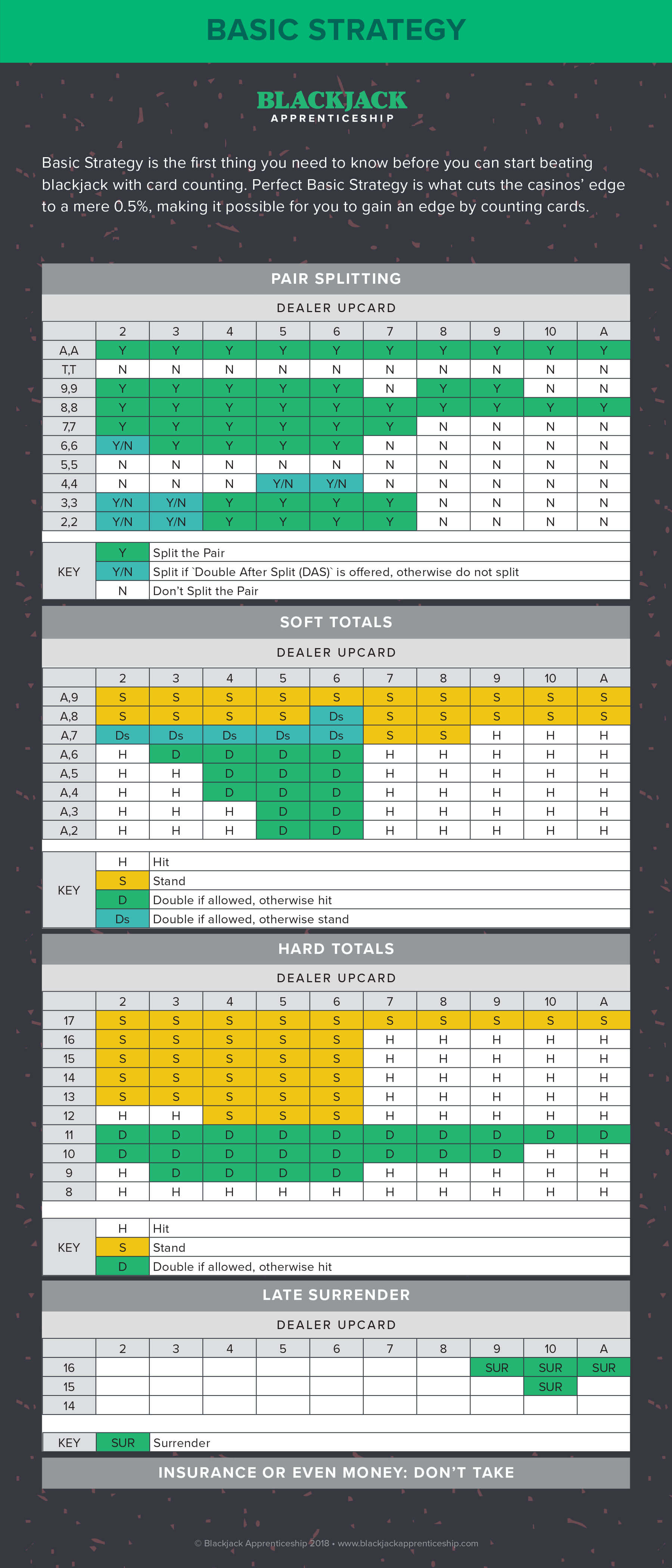 Please enable JavaScript to view the comments powered by Disqus.
Please enable JavaScript to view the comments powered by Disqus.Tips for beating one of the world’s toughest card games
By J. Phillip. Vogel
Like many of our favorite casino games, the exact origins of blackjack are forever lost to history. One of the first recoded descriptions of the game places its appearance in France during the 17th century, where it thrilled gamblers under its simple, yet appropriate appellation “vingt-et-un.” Some gaming historians, however, contend that rather than originating in France, vingt-et-un was nothing more that a variation of Spain’s already popular game “One and Thirty” or perhaps even a spin-off of Italy’s baccarat.
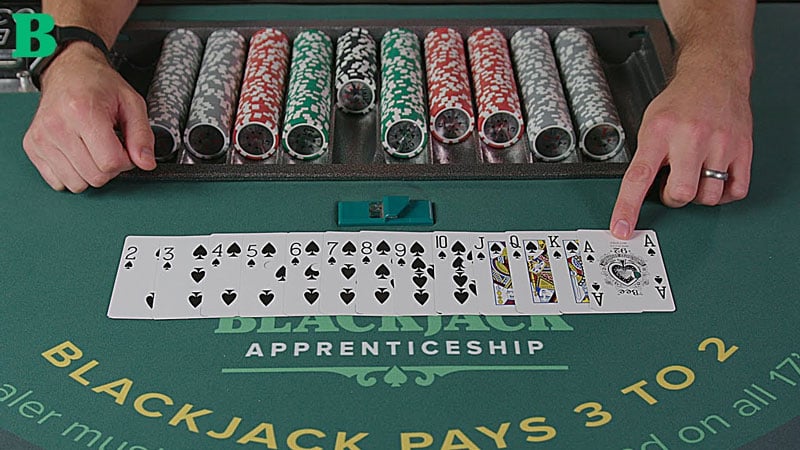
Regardless of its origins, so popular was the game that it quickly emigrated globally, taking on slight changes in both name and rules to suit regional appetites. In Russia, the game was called “Ochko” (roughly translated as “the hole’). In England, where players were rewarded for drawing both the jack and ace of spades as their first two cards, it became known as “blackjack.” But whether it’s “21” “California Aces” or even “Ochko,” blackjack continues to be one of gambling’s perennial favorites.
Blackjack Basics
In its most basic form, blackjack is one of the easiest casino games to learn. The objective is to attain a hand value that is greater than that of the dealer, yet does not exceed 21. It can be played using anywhere from one to eight standard decks, with cards of rank 2 through 10 scored according to their face value, while face cards—jack, queen, and king—are valued at 10 points. Aces can be worth either 1 or 11 points. The game is further governed by the following rules:
- Players win if their hand has a greater total point value than the dealer’s, without going over 21.
- The best possible hand is called a blackjack. It consists of an ace and any 10-point card. A winning blackjack pays 3:2.
- If both the player and the dealer have a tie—including with a blackjack—the bet is a tie or “push” and money is neither lost nor paid.
- All other winning hands pay even money, 1:1.
- If either the player or the dealer exceeds 21 or “busts” the hand automatically loses.
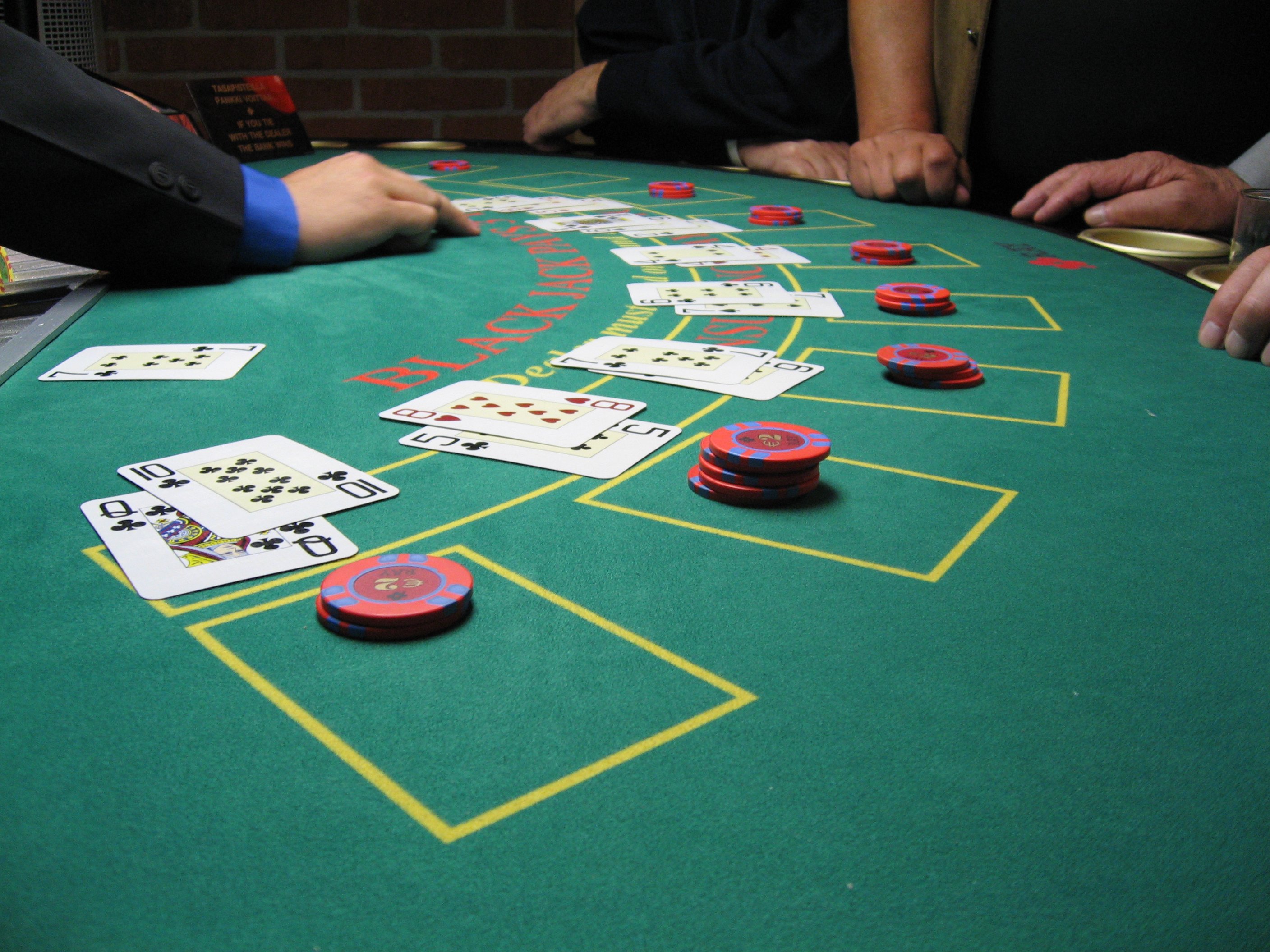
- If both the dealer and player bust, the player loses.
A round of blackjack begins with the player placing a bet in the circle or designated betting area in front of him. Every player will then be dealt two cards (both typically face up) while the dealer receives two cards, one of which is exposed and the other (known as the “hole” card) face down. If the dealer has a ten or an ace exposed, he will check for blackjack, in which case all player hands lose, except another blackjack. However, should the dealer have an ace exposed, players may take “insurance,” a side bet that pays 2-1 and hedges the initial bet against a dealer blackjack.
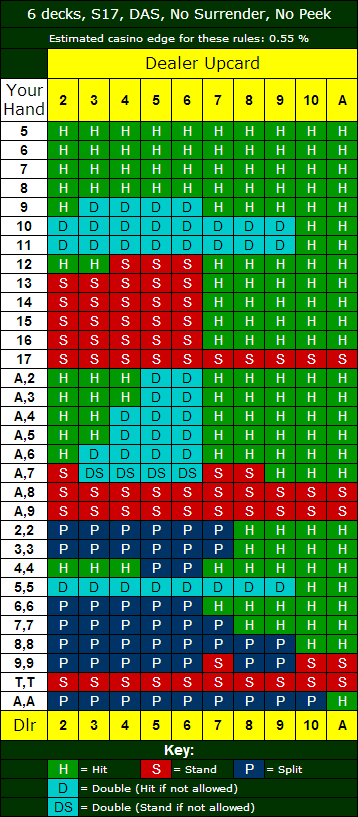
If the dealer does not have blackjack, play continues starting with the player seated immediately to the left of the dealer. The following options are then available:
Stand. If the players decide their hand is sufficiently strong, they may opt to take no additional action.
Casino House Rules Blackjack Rules
Hit. Players may draw additional cards until they either bust or decide to stand.
Double down. If players hands warrants, they may opt to double their current bet and receive one additional card. This option is only offered on the first two cards, and in some cases on the first two cards after splitting.
Split. When a player’s first two cards are of equal point value, he may separate them into two hands with each card being the first card of a new hand. To split, the player must make another wager of equal value to the initial wager for the second hand. In cases where another identical point valued card is dealt following the split, re-splitting may be allowed. (Re-splitting aces is often an exception.) When allowed, players may also double down after splitting.
Surrender. In certain versions of blackjack, players may surrender or yield a poor hand on their first two cards, rather than play against a potentially superior hand. Surrendered hands return ½ of the wager to the player.
Winstar Casino Blackjack House Rules
Once all players have acted, the dealer will then complete his hand. Unlike players, the dealer has no freedom to determine the best course of play and must abide by the house rules which govern all actions. Usually the dealer must hit until his cards reach a total value of 17 or more. In some casinos or game versions, if a dealer is dealt a soft 17 (an ace plus cards totaling six additional points) he must also hit. If the dealer busts, all players active in the hand win automatically.
Basic Strategy
Despite its simplistic premise, blackjack is one of the most difficult games in the casino. But with an extremely low vigorish—sometimes reaching 0.18%—it can also be one of the most profitable. Or at least it is if you master basic strategy.
Although daunting and at times confusing, basic strategy is really nothing more than a breakdown of the optimal way to play every possible situation based on the house’s rules, your current hand and the dealer’s exposed card. Table A and Table B are a sample basic strategy table for use with multiple deck games.
Remember, optimal basic strategy varies with the version of the game you play, and there are tables such as these that outline exactly what action to take given the circumstances. And while they may be challenging to memorize, if making money as a blackjack player is your ultimate goal, there’s simply no other option.
Strategies to avoid
A lot of new players can be taken in by seemingly sound strategies that actually have no real place at the tables. Avoid the following dangerously ineffective methods:
Play as the dealer plays. Some people think because the house has an edge on the game that by playing according to the dealer’s rules (such as always hitting 16 or less, or never doubling or splitting) that same edge will apply. Wrong. Remember, the player acts first, and even if both you and the dealer bust, the house wins the hand. Such strategy results in a house edge of approximately 5.5%
Martingale System. Some players advocate an age-old, misguided betting system design ostensibly to guarantee winning. Called the “Martingale System,” this method requires players to double their bet for every hand following a loss. The theory is that by doubling the bet you will eventually win a hand and recoup any previous losses. Although it sounds powerful, this system is flawed and ineffective, and fails to take into account high-risk bets, a moderately bad run of cards, and table limits.
Never draw to a hand that can bust. Rather than take a card that could break the hand, some players prefer to always stand pat on hard totals of 12 or more. Such play is harmful in the long run and results in a vigorish of approximately 4%.
Although these and many other half-baked strategies may sound good in theory, at best they’re mildly innocuous and worst devastating. Stay clear of tricks and systems and stick with basic strategy, the only proven method of minimizing the house’s edge.
Variations on a Theme
While the traditional version is often the game of choice among blackjack enthusiasts, there are many other exciting and profitable variants available in both traditional and online casinos. Although the basic premise for each variation is akin to traditional blackjack, each has its own set of rules and strategy.
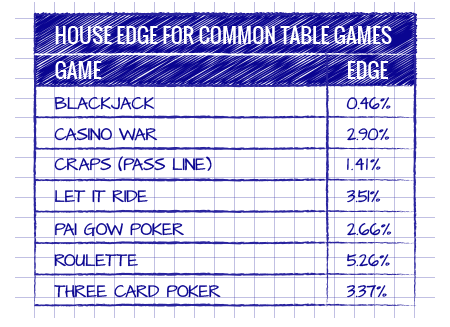
Game: Blackjack Double Exposure
Basic Rules: Offers many of the same traditional blackjack rules except: Both dealer cards are exposed, dealer wins all ties except on a natural blackjack, players may split only once, player blackjack pays 1:1.
Casino House Rules Blackjack Card Game
Game: European Advanced Blackjack
Basic Rules: Available in regular and high limit versions. In this double-deck game blackjack pays 3:2, the dealer stands on soft 17, and both double down and
split options are available.
Game: Spanish 21
Basic Rules: Liberal blackjack game. Rules include: multiple 48-card decks (10s are removed from play), player 21 always wins, player blackjack beats dealer blackjack, player may double after splitting, double down rescue, five-card 21 pays 3:2, six-card 21 pays 2:1, and seven-card pays 3:1.
Game: Super Fun 21
Basic Rules: Very liberal single deck version of blackjack. Rules include: Dealer hits soft 17, player may double after a split, doubl on any number of cards, late surrender is available, as is double down rescue. Blackjack pays even money.